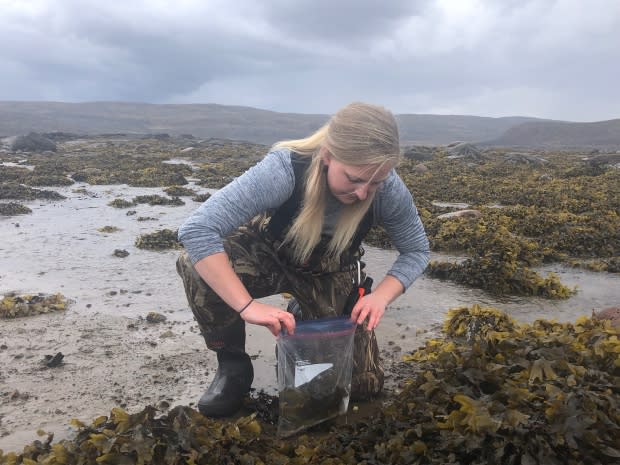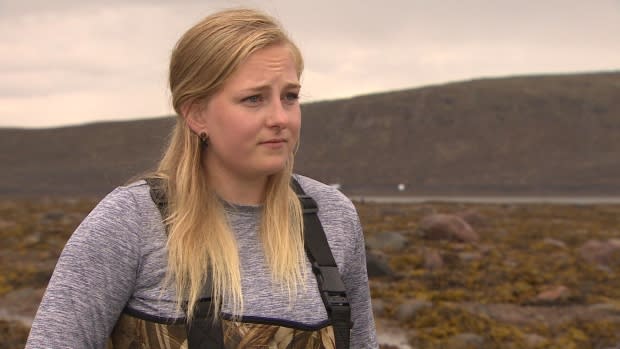Clams being tested in Frobisher Bay after mass sewage dump in the spring
Researchers are in Iqaluit testing clams in Frobisher Bay for contamination.
The testing is part of a joint effort between the University of Manitoba and the federal Department of Fisheries and Oceans.
Clams are a staple food for Inuit and many people are concerned about the cleanliness of clams after more than 30-million litres of raw sewage leaked into Frobisher Bay this spring. A blockage at the city's lift station forced the sewage overflow that lasted 33 days.
"Every year we get that question from people here," said Pitseolak Alainga, chair of the Amarok Hunters and Trappers Association, about how clean the clams are.
Alainga met with the team sampling the clams to talk about the community's concerns.
"That's a big reason why this project is even here to begin with," said Tina Schaefer, a master's student at the University of Manitoba leading the research.

Clams eat by filtering water through their bodies. Bacteria or contamination in the sewage could end up in the clam's tissues, according to Schaefer.
There is no reason to believe the clams are unsafe to eat, but with this testing people can know for sure, she said.
Their tissues will be sampled to see if clams in certain areas of the bay are healthier than others.
The clams have been collected from Apex Beach, Peterhead Inlet and several spots close to Iqaluit in Koojesse Inlet.
Schaefer will also see how climate change has impacted clam health by looking at water and mud temperature.
"The oldest clam we found is about 60 years old so we have a timeline back to 60 years ago," said Schaefer.
When a clam is cut in half, the shell has rings like a tree trunk that show its age. Clam shells can show what the water salinity, temperature, nitrogen level and certain contamination were like for every year of its life.
"We are hoping to make a map for locals everywhere to see how it's progressed over time," said Schaefer.

The 300 clams collected range in age from one to 60 years old, which will give a lot of information about how the bay has changed over time.
"We are here for the locals and we want to make sure the country food is safe for them," said Schaefer.
Initial results from the study will go to the local Hunters and Trappers Association in January, with complete results available next summer.
The City of Iqaluit declined CBC's request for an interview.


